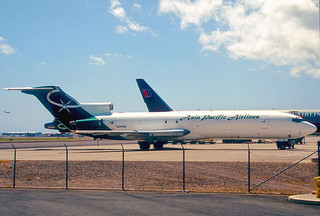Made in America: A Case Against the Trans-Pacific Partnership

Most of the clothing, electronics, and agricultural goods you buy are not made in the U.S. They are imported from developing countries, such as China. The Obama administration is pushing for the Trans-Pacific Partnership (TPP) to create fair competition in the Asia-Pacific region. Their goal is to create an environment where “Made in America” goods can thrive. However, the TPP partnership has some flaws that could actually make the situation worse.
Overview of the Trans-Pacific Partnership Agreement
The TPP agreement is supposed to promote job growth across the Asia Pacific as well as the U.S. because it opens up new regions for small businesses to operate. Currently, small businesses in the U.S. can’t afford to export to Asia-Pacific countries because of the high tariffs on manufactured products. That is an obvious reason why there are not more “Made in America” products. For instance, there is a 27-percent tariff on auto parts entering Vietnam from the U.S. Many other countries, such as China, Thailand, and Indonesia can export auto parts duty free to Vietnam. There are also high tariffs on agricultural exports from the U.S. to the Asia-Pacific region.
Creating fairness of competition is the main goal of the TPP agreement. It would essentially eliminate all tariffs on goods that are exported from the U.S. to the Asia-Pacific region. This would foster an environment for more “Made in America” products, which would boost the manufacturing industry in the U.S. and help the economy because of job growth.
The Made in America Movement
For over a decade, the U.S. has been outsourcing jobs to other countries for cheaper labor. Most of the clothing, electronics, and other goods that you buy come with a label that says, “Made in China,” or some other developing country. However, for the past couple of years, consumers in the U.S. have been pushing for Made in America products. Some U.S. consumers are even willing to pay more for items made on their own turf because it creates manufacturing jobs in the U.S. and helps the economy.
The TPP agreement sounds like a good idea because it would eliminate tariffs for U.S. manufacturers. However, it would not actually help create manufacturing jobs in the U.S. This is because the U.S. cannot compete with the labor costs of developing countries. It will never be acceptable to pay someone less than $4 per hour. So, even though the TPP agreement creates a fair trade environment, it doesn’t actually help the U.S.
If the U.S. want to boost their manufacturing industries, the TPP agreement is a bad idea. For instance, New Balance has lobbied for the U.S. to create policies where only “Made in America” clothing can be worn by the military. The TPP agreement would change all that because no country in the Asia-Pacific or the U.S. could favor their own goods over the country of another. Therefore, price would be the only deciding factor, and the U.S. would lose out based on the high cost of labor.








